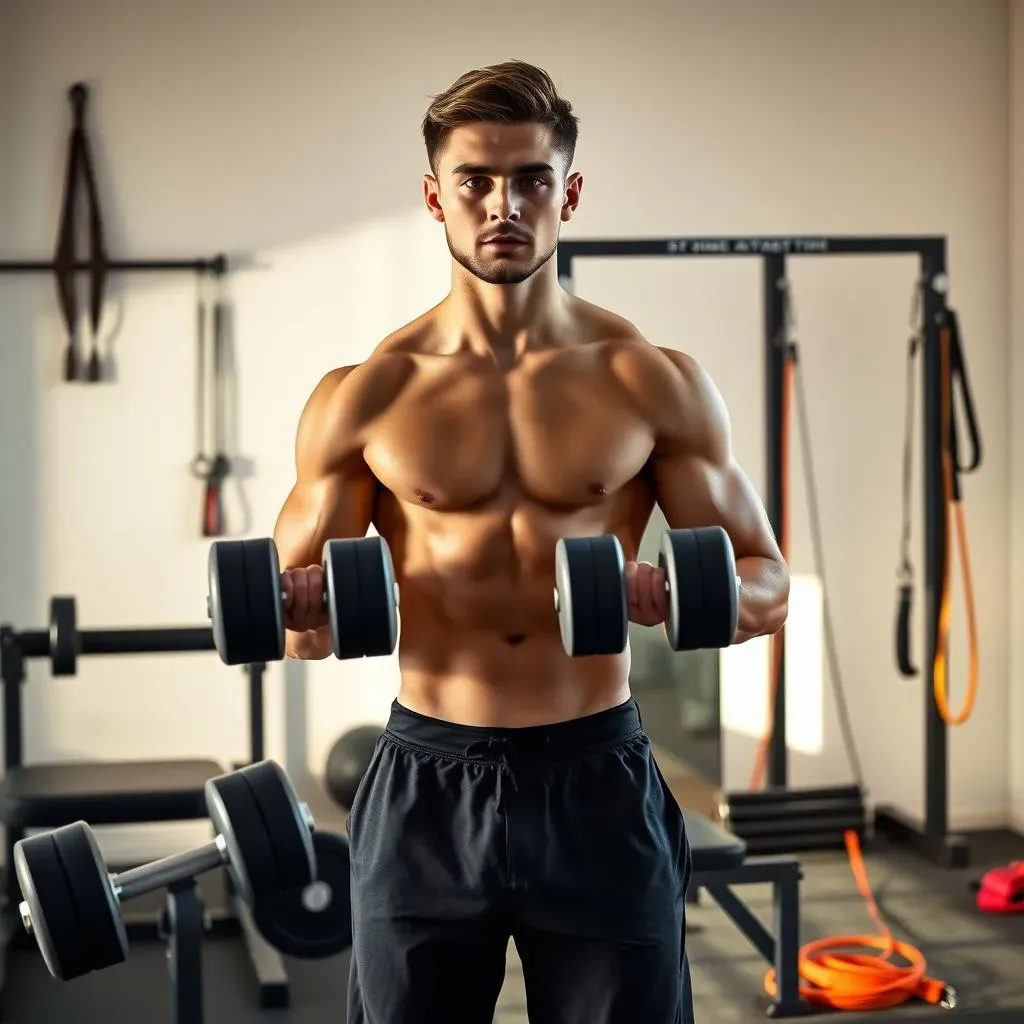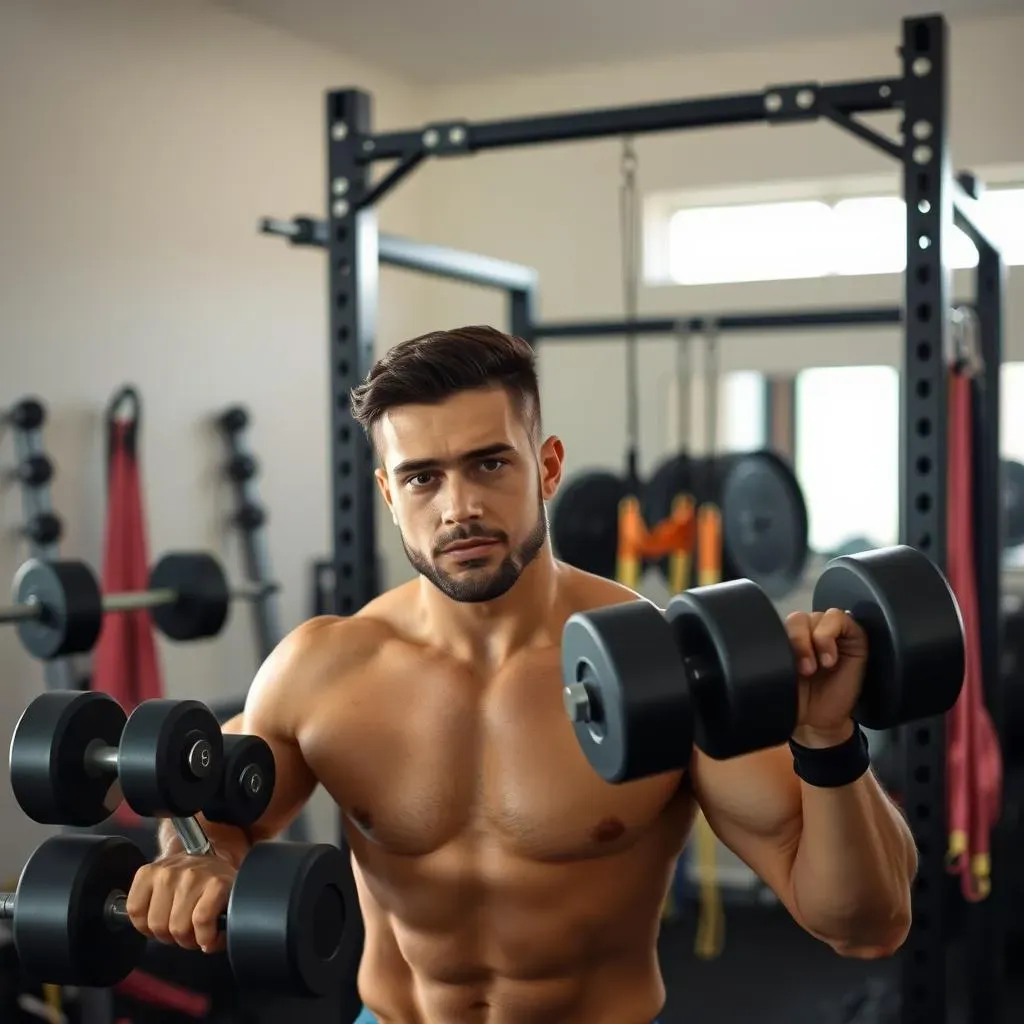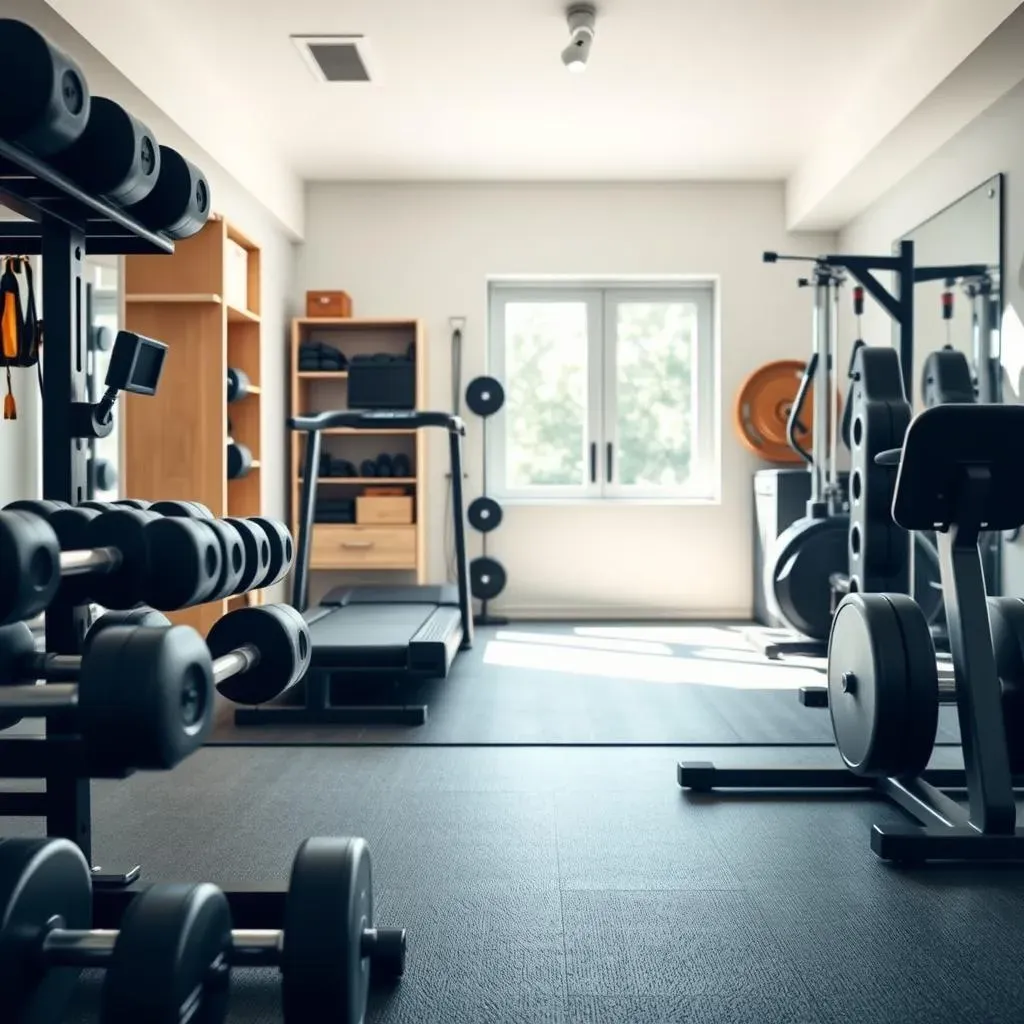Table of Contents
So, you've got some home gym equipment, or maybe you're thinking about getting some. That's awesome! But let's be real, staring at a pile of metal and wondering "how to use this thing?" is a common feeling. It's totally normal to feel a bit lost when you're starting out. This article is your no-nonsense guide to navigating the world of home gym equipment. We'll start by figuring out what gear you really need, then we'll move on to the practical stuff: how to actually use it. Forget about feeling intimidated, we're going to take it slow, step by step. I'll show you the ropes on some common pieces, and we'll even get into some simple exercises. By the end, you'll have the confidence to jump in and start using your home gym equipment like a pro, without any of the stress. Plus, we'll cover a few safety tips to keep you injury-free and your equipment in tip-top shape. Get ready to transform your space into your personal fitness haven! Let's get started with your journey on how to use home gym equipment.
Setting Up Your Home Gym: Essential Equipment
Setting Up Your Home Gym: Essential Equipment
so you're thinking about making your own home gym? That's fantastic! But before you go wild and buy everything you see on those fitness commercials, let's chat about what you actually need. I remember when I started, I thought I needed ALL the fancy stuff. Spoiler alert: you don't. It's way better to start with the basics and then add to your collection as you go. Think of it like building a house, you gotta have a good foundation, right? For a solid home gym, you need a few key pieces of equipment. First, a good set of adjustable dumbbells is a game-changer. They save space, and you can change the weight easily. Next, a sturdy bench is crucial for all sorts of exercises. And don't forget about resistance bands, they're like the Swiss Army knife of the fitness world – super versatile and cheap!
Now, if you're serious about lifting, a power rack or squat stand is a must-have. It's not just for squats; you can use it for pull-ups, bench presses, and more. It's like the central hub of your strength training setup. And let's not forget about cardio! A jump rope is cheap and effective, or if you've got the space, a treadmill or stationary bike can be a great addition. Remember, it's not about how much stuff you have, it's about how well you use it. Start small, build your collection as you progress, and most importantly, make sure it's something you'll actually use. Don't buy that fancy ab roller if you are not going to use it, just saying.
Essential Equipment | Why It's Important | My Personal Tip |
|---|---|---|
Adjustable Dumbbells | Versatile for many exercises, saves space | Get a set that goes to at least 50 lbs, you'll be surprised how quickly you get stronger. |
Sturdy Bench | Essential for bench presses, rows, and more | Make sure it's adjustable, you'll be happy later. |
Resistance Bands | Great for warm-ups, assistance, and variety | Get a set with different resistance levels. |
Power Rack/Squat Stand | For squats, pull-ups, and other compound lifts | Invest in a good one, it's worth it in the long run. |
Jump Rope | Simple, cheap, and great for cardio | Start slow, you'll get better with practice. |
How to Use Home Gym Equipment: A StepbyStep Guide
How to Use Home Gym Equipment: A StepbyStep Guide
Getting Started: The Basics
so you've got your gear, now what? The first thing to remember is that it's not a race. You're not trying to become a superhero overnight. Start slow, and get the hang of each movement before you try to lift heavy. Think of it like learning to ride a bike, you wouldn't start with a mountain bike on a rocky trail, right? You'd start with a basic bike on flat ground. Same with gym equipment. Begin with lighter weights to get the feel of the movement and to make sure your form is correct. Proper form is key to avoiding injuries and getting the most out of your workout. It’s way better to do a few reps with good form than to do many with bad form.
Before you even touch any weights, take a minute to adjust the equipment to fit your body. If you're using a bench, make sure it's set at the right height. If you're on a machine, adjust the seat, pads, and levers so that everything feels comfortable and you can move through the full range of motion smoothly. A little adjustment can make a big difference in how effective and safe your workout is. Don't just jump on and start going, take the time to set things up properly. It’s all about being intentional with your workout.
Mastering the Movements
Now, let’s talk about the movements. For dumbbells, start with basic exercises like bicep curls, rows, and shoulder presses. These are great for building overall strength and getting comfortable with the weights. When you're doing these exercises, focus on controlling the weight as you lift it and lower it, don't just let it drop. Think of it like you are moving through water, each motion should be smooth and controlled. For the power rack, squats and bench presses are your go-to exercises. Start with an empty bar or very light weight until you feel comfortable with the motion. Remember, slow and steady wins the race, it’s not a competition with anyone but yourself.
Resistance bands are another great tool to master. Use them for warm-ups, stretching, or even adding some extra resistance to your exercises. You can use them for rows, squats, and many other movements. They're super versatile and easy to use. The key with any equipment is to focus on the muscle you’re trying to work. Don’t just go through the motions. Engage your core, keep your back straight, and move with purpose. This will not only help you get stronger but also help you avoid injury, and that’s the key, to keep working out.
Equipment | Basic Exercise | Focus |
|---|---|---|
Dumbbells | Bicep Curls, Rows, Shoulder Press | Controlled movements, full range of motion |
Power Rack | Squats, Bench Press | Proper form, start with light weight |
Resistance Bands | Rows, Squats, Stretches | Variety, warm-ups, added resistance |
Putting It All Together
Once you're comfortable with the basic movements, you can start to put together a routine. Don’t overthink it. Start with a few exercises for each muscle group, and do 2-3 sets of 8-12 reps. For example, you could do squats, bench presses, and rows for your main lifts, and then add in some bicep curls and shoulder presses. The key is to be consistent, and to listen to your body. If you’re feeling tired, take a break. If something hurts, stop. It’s about being smart and safe, always. Start with 2-3 days a week and gradually increase the frequency as you get stronger.
Remember, the goal is to make fitness a part of your life, not just something you do when you feel like it. Be consistent, be patient, and be kind to yourself. Everyone starts somewhere, and it’s all about your personal journey. And always remember to warm up before you start, and cool down when you're done. It’s like telling your body “Hey, we are about to start and now we are done” It gets your body ready for the workout, and helps you recover afterward.
Home Gym Equipment: Workouts and Exercises
Home Gym Equipment: Workouts and Exercises
Crafting Your Workout Plan
Alright, so you've got the gear and the know-how, now let's put it all together and get you moving! Creating a workout plan doesn't have to be some crazy, complicated thing. It's all about finding what works for you and what you enjoy. I like to think of it as building a playlist for your body. You need a mix of different "songs" to keep things interesting and hit all the right "notes." Start with the basics, like a mix of strength training, cardio, and flexibility. The key is to be consistent and find a routine that you can stick to. Don't try to do too much too soon, it's better to start slow and build up gradually.
When you're planning your workouts, remember to include exercises that target all the major muscle groups. We're talking chest, back, shoulders, arms, legs, and core. A good rule of thumb is to do compound exercises, like squats, bench presses, and rows, first. These work multiple muscle groups at once and give you the most bang for your buck. Then you can add in some isolation exercises, like bicep curls and tricep extensions, to target specific muscles. Variety is the key to progress, it keeps your body guessing and prevents plateaus.
Sample Workout Routines
Here's a sample workout plan to get you started. Remember, this is just a template, feel free to adjust it to fit your own goals and preferences. This is like a recipe, you can add your own twist to it. For your strength days, try doing 3 sets of 8-12 reps for each exercise. For cardio, aim for 20-30 minutes at a moderate intensity. And don't forget to stretch before and after each workout. It's like giving your muscles a good warm up and a gentle cool down, it's all about taking care of your body.
Day | Workout | Exercises |
|---|---|---|
Monday | Strength Training | Squats, Bench Press, Rows, Shoulder Press, Bicep Curls |
Tuesday | Cardio | Jump Rope, Treadmill, Stationary Bike |
Wednesday | Rest or Active Recovery | Light Walk, Stretching |
Thursday | Strength Training | Deadlifts, Overhead Press, Pull-Ups, Tricep Extensions |
Friday | Cardio | Jump Rope, Treadmill, Stationary Bike |
Weekend | Rest or Active Recovery | Yoga, Hiking, Stretching |
Progressing and Staying Motivated
As you get stronger, it's important to increase the challenge. You can do this by adding weight, increasing reps, or decreasing rest time. It's like leveling up in a game, you need to keep pushing yourself to see progress. But remember, it's not about trying to do too much too soon, it's about making gradual progress over time. And don't be afraid to mix things up, try new exercises, or change your routine. It's all about finding what works for you and what keeps you motivated.
Staying motivated is key to making fitness a habit. Find an accountability partner, track your progress, and celebrate your wins. It's about making it fun, not a chore. I find that listening to some good music or watching a show during my workouts helps me stay engaged. And don’t forget to give yourself rest days, it’s when your body actually repairs and gets stronger. It's all about finding that balance between pushing yourself and taking care of yourself. Remember, fitness is a journey, not a destination, so enjoy the ride!
Safety Tips and Maintenance for Your Home Gym Equipment
Safety Tips and Maintenance for Your Home Gym Equipment
Prioritizing Safety
so we've talked about the fun stuff, now let's get serious for a minute. Safety is not a joke, especially when you're working out at home. You don't have a gym staff to help you, so you need to be your own safety officer. First things first, always check your equipment before you start. Look for loose bolts, fraying cables, or anything that looks like it's about to give way. It's like doing a pre-flight check before you take off on a plane, you need to make sure everything is in working order. And please, don't try to lift more weight than you can handle. It's better to start light and gradually increase the weight as you get stronger. Think of it like learning to drive, you wouldn't start with a race car, right? You'd start with a normal car and work your way up.
Another thing, make sure you have enough space to move around. Don't set up your gym in a cramped corner where you're going to trip over things or bump into walls. You need room to move freely and safely. And always wear proper workout attire, like comfortable shoes and clothes that allow you to move easily. This isn't a fashion show, it's about being safe and comfortable. And keep a first-aid kit handy, just in case, you know, life happens. It's always better to be prepared than to be sorry.
Maintaining Your Gear
Now, let's talk about keeping your equipment in good shape. It's not just about safety, it's about making your gear last longer. Think of your equipment like your car, you need to take care of it to keep it running smoothly. Regularly wipe down your equipment after each use, especially anything you've touched with your sweaty hands. This will help prevent the build-up of germs and keep your gear clean. And don't forget to check your equipment for wear and tear on a regular basis. Tighten any loose bolts, lubricate any moving parts, and replace anything that's damaged. It's like giving your equipment a spa day, it deserves it.
Also, store your equipment properly when you're not using it. Don't just leave it lying around on the floor. Find a safe and dry place to store it, where it won't get damaged. It's like putting your tools away after you're done using them, it keeps them organized and ready for the next time. And if you're not sure how to maintain your equipment, check the manufacturer's instructions. They'll have specific recommendations on how to keep your gear in tip-top shape. It's like reading the manual before you assemble furniture, it's always a good idea.
Maintenance Task | Frequency | Why It's Important |
|---|---|---|
Wipe Down Equipment | After Each Use | Prevents germ buildup and keeps it clean |
Check for Wear and Tear | Regularly | Identifies and fixes potential issues |
Tighten Bolts and Lubricate | As Needed | Keeps equipment functioning smoothly |
Store Equipment Properly | When Not in Use | Prevents damage and keeps organized |
Smart Workout Practices
Beyond the equipment itself, there are some smart practices you should always follow when you're working out. Always warm up before you start your workout, and cool down when you're done. It's like preparing your body for the workout and helping it recover afterward. And listen to your body. If you're feeling pain, stop. Don't push yourself too hard, it's not a competition. It's about being kind to yourself and taking care of your body. And stay hydrated, drink plenty of water before, during, and after your workouts. It's like fueling your body, it needs the right fluids to function properly. And if you're ever unsure about how to use a piece of equipment, ask for help from a qualified trainer or do some research online. It's always better to be safe than sorry.
Remember, working out at home is a great way to stay fit and healthy, but it's also important to do it safely and responsibly. By following these tips, you'll be able to enjoy your workouts and achieve your fitness goals without any unnecessary risks. It's like being a responsible driver, you need to follow the rules of the road to keep yourself and others safe. So, be smart, be safe, and have fun with your home gym equipment!
Wrapping Up: Your Home Gym Journey
Alright, you've made it! We've covered the basics of setting up your home gym, learning how to use different equipment, and even touched on some great exercises. Remember, the key is consistency and patience. Don't get discouraged if you don't see results overnight; building strength and fitness takes time. Now that you're equipped with the knowledge on how to use home gym equipment, it's time to put it into action. Start slow, listen to your body, and most importantly, have fun with it. Your home gym is there to support you on your fitness journey. So go ahead, get in there, and make some progress! You've got this.